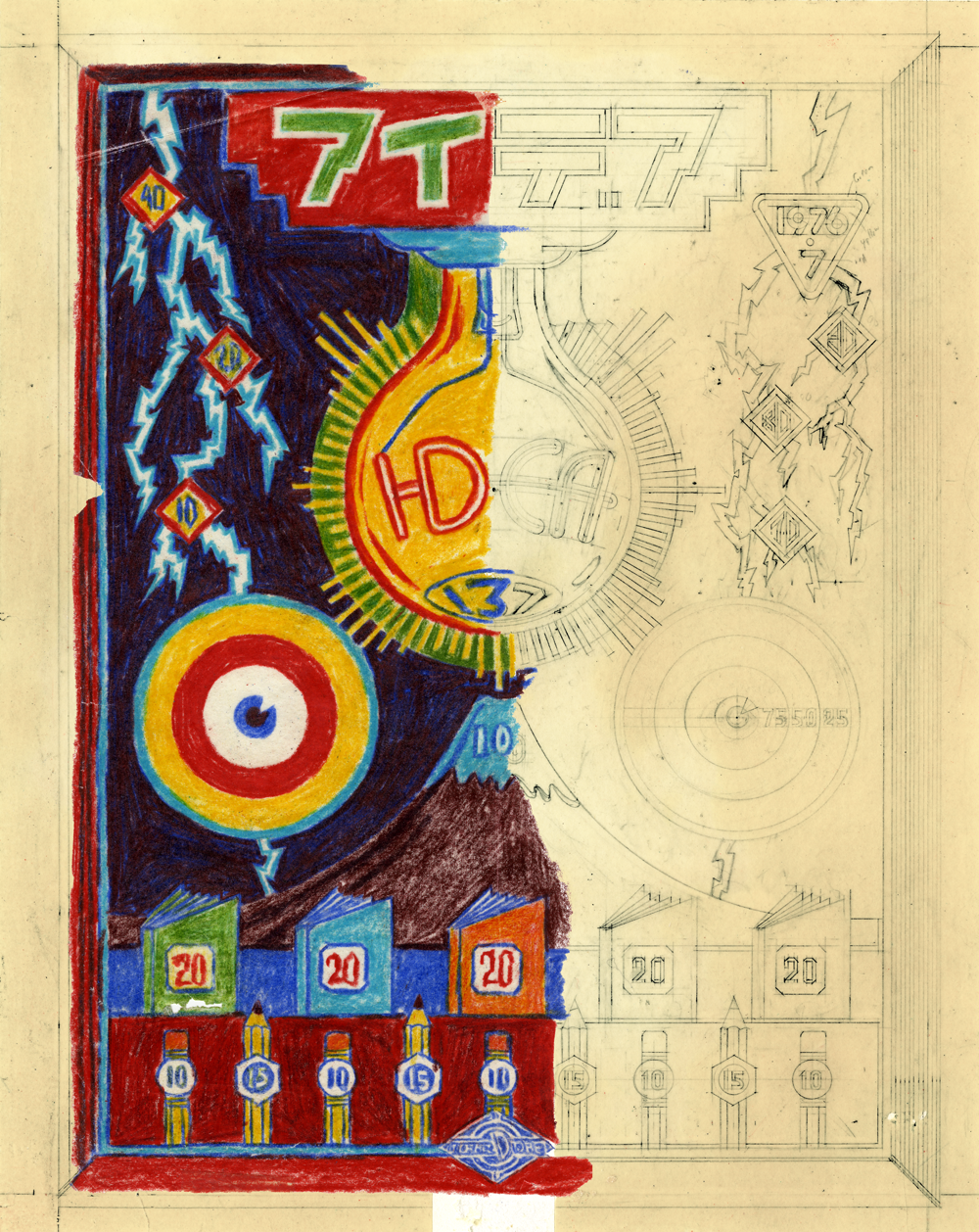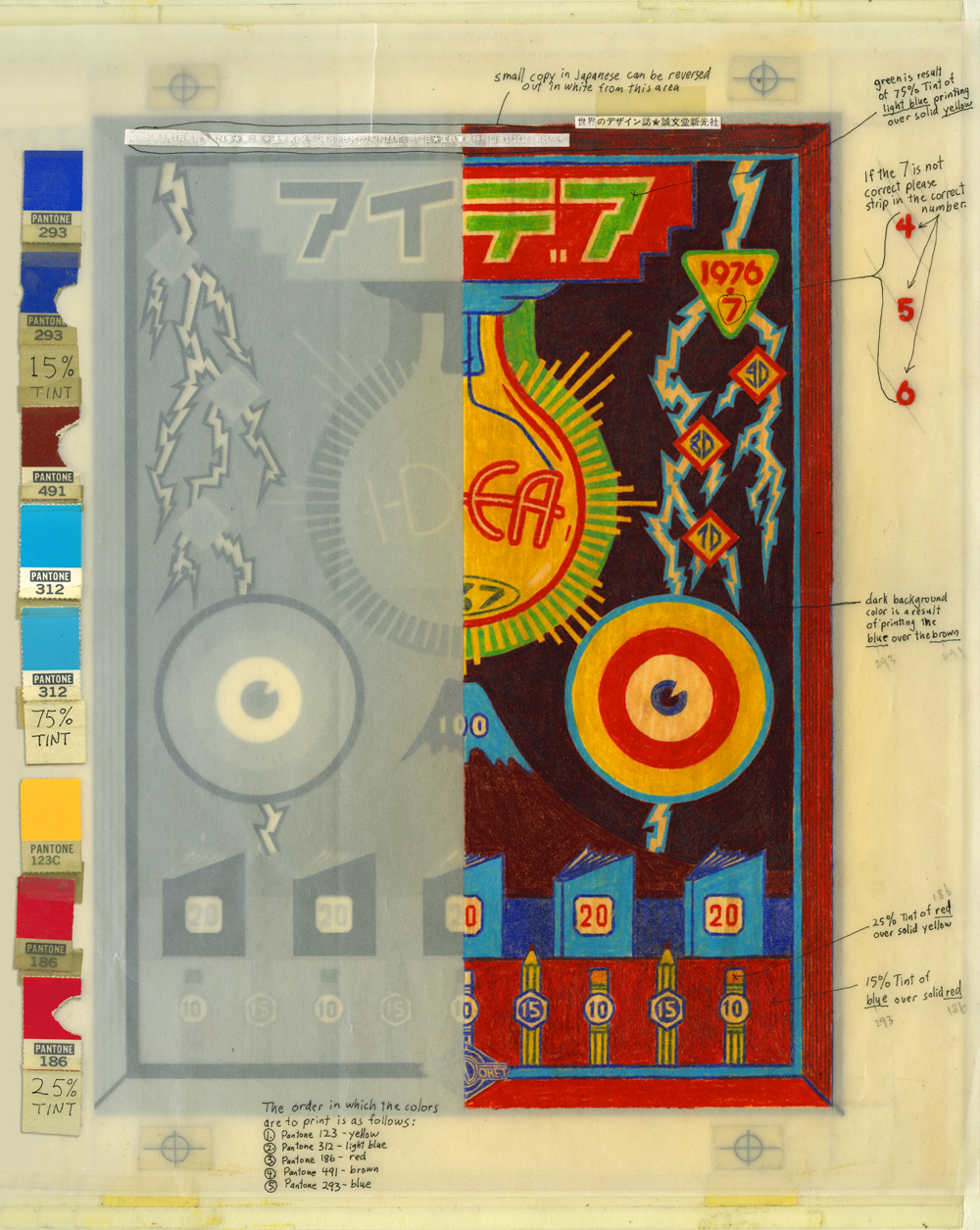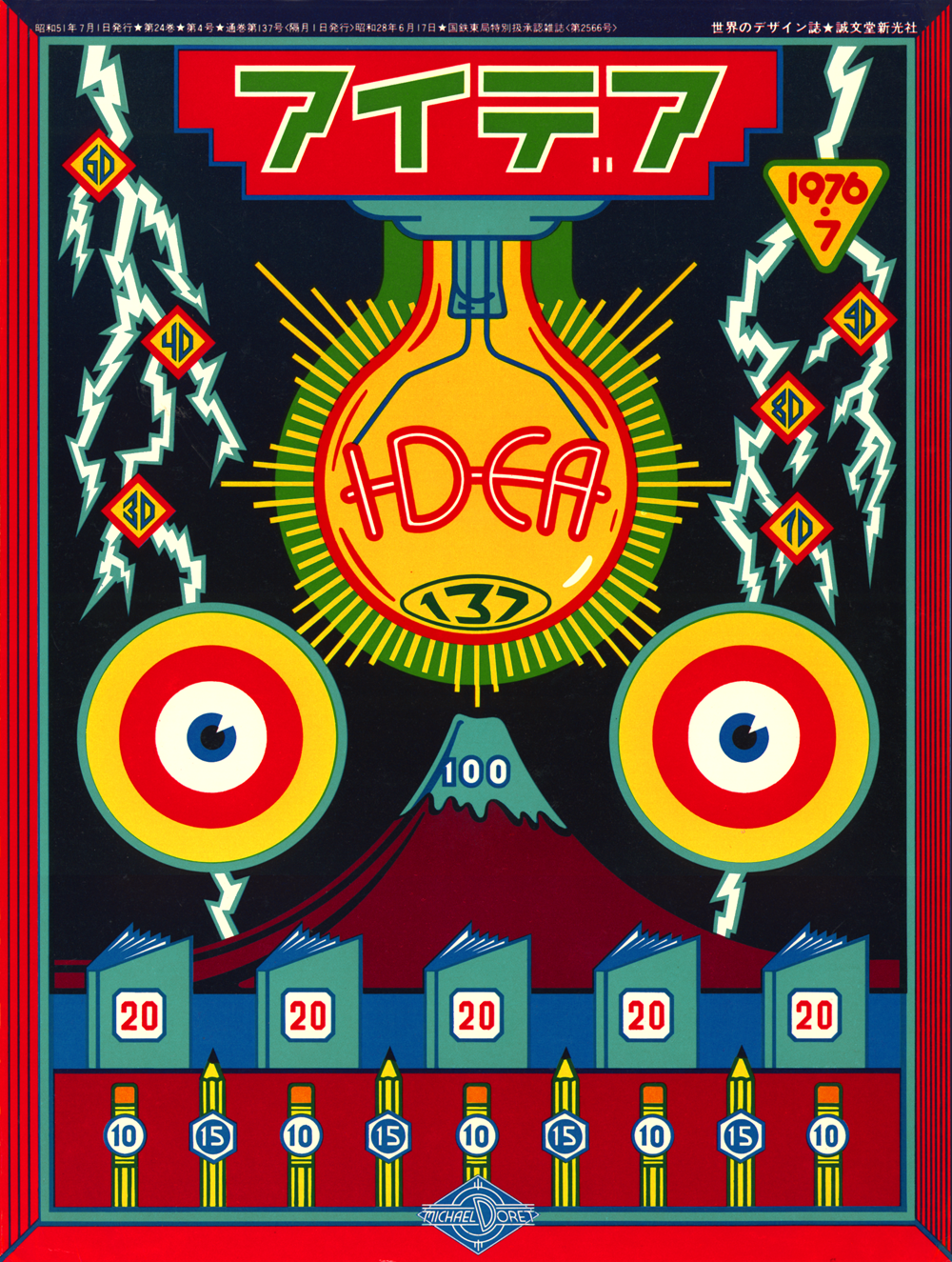My friend José Cruz recently posted this LINK on my Facebook page, reminding me about one of my earliest, favorite projects—one which set the tone for much of my work that followed. In the page that was linked the reproduction my cover was so tiny that I figured it might be time to unearth the real thing and tell its story. I had only been freelancing for a couple of years when the Japanese magazine “Idea” contacted me, wanting to do an article about my work. I proposed doing a cover for that issue, and they agreed. Rather than designing a standard 4 color process cover, I prepared the art for 5 flat Pantone colors. Overlapping the transparent inks would create even more colors, and I hoped to achieve a richness and depth of color that approached the look of a silkscreen. It all worked out really well.
Starting with a few thumbnail pencils, I developed the look for the cover, which was based on an arcade/shooting gallery/metal target game look:
’m sure there were a couple of pencil drawings between the ones above and the next one, but it’s been many years, and things tend to disappear. This next drawing demonstrates how I used to work pre-computer. I needed to work out the drawing in the finest detail, because once I inked the linework on prepared acetate, there was no such thing as ⌘-Z: making changes was difficult. You’ll notice in the detail, the great care I used when drawing—this was extremely painstaking work (the yellowing of the vellum is mostly due to the aging of the rubber cement used to glue it to a board:
Next I worked out rough color with Prismacolor pencils on a piece of tracing paper over the tight drawing. I was tryng to approximate how transparent Pantone colors would react when laying one over the other. For example laying the blue/violet over the burgundy would get me a very dark—almost black-ish color. There were probably other color studies, but this is all I have left:
After working out the color, all that remained was to create the finished pre-separated art, inked in black with technical drawing pens (Koh-I-Noor Rapidograph). In this case the art consisted of seven inked, prepared acetate overlays, plus the base art that was inked on vellum and glued to an illustration board. Below is a representation of just one of the overlays in position over the tight tracing—where it was when it was inked—this represented the dark blue ink:
When all the inking was done, all the overlays were registered to each other (note the register marks), and the whole was prepared for the printer in Japan with detailed instructions written on a vellum overlay with a more accurate representation of what the finished piece would look like (rendered in colored pencil). Pantone color chips were taped alongside for color matching. It’s a hell of a lot easier to render art like this today using Adobe Illustrator!
Below is the actual printed cover. It remains one of my favorite pieces. It also served as the design and color model for how I executed the album cover “Rock and Roll Over” for KISS just a few months later that year:








